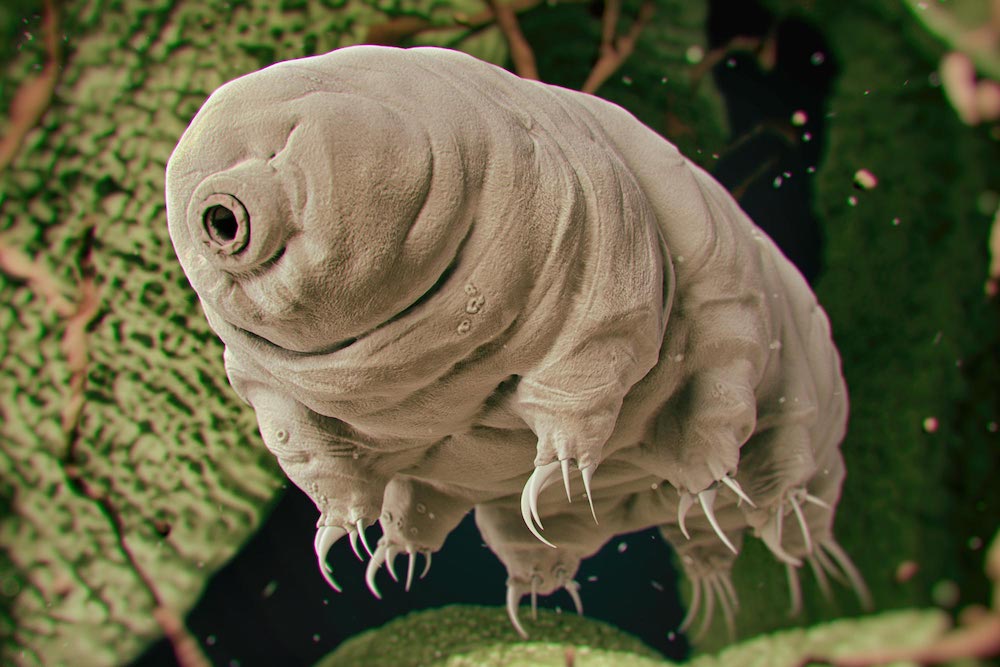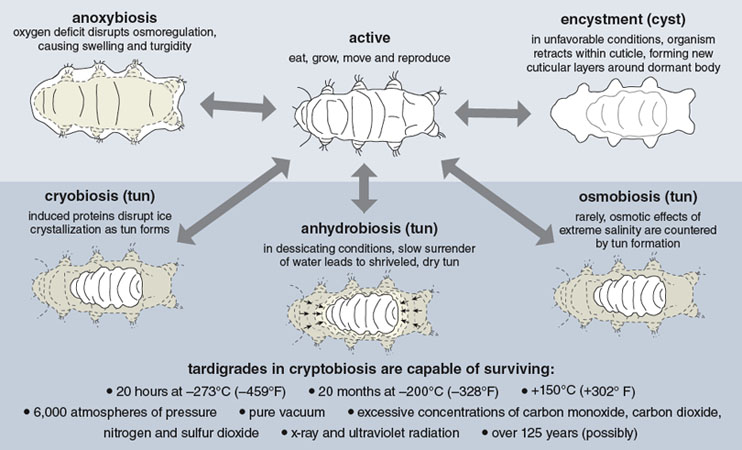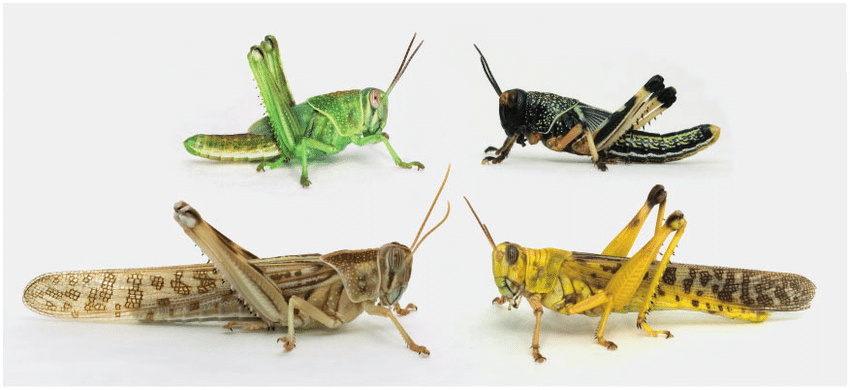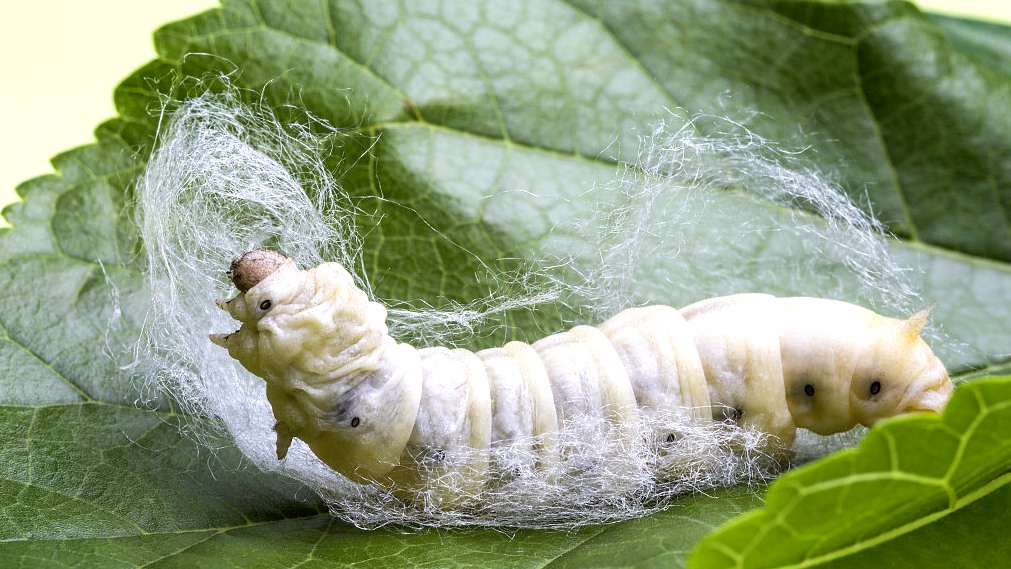How hardcore are Tardigrades?

Tardigrades, often colloquially referred to as water bears, are microscopic, water-dwelling animals belonging to the phylum Tardigrada. These resilient organisms have earned a reputation for their extraordinary ability to withstand extreme conditions that would be lethal to most other life forms.
Anatomy and Characteristics
To understand the hardcore nature of tardigrades, it is essential to explore their anatomy and key characteristics. Tardigrades are characterized by their segmented bodies and four pairs of legs, each ending in claws. Their cuticle, or outer skin, provides protection and is moulted periodically. The unique anatomy of tardigrades plays a crucial role in their ability to endure extreme environments.
Body Structure
Tardigrades typically exhibit a bilaterally symmetrical body with four body segments, each housing a pair of legs. The segments include the head, three thoracic segments, and four abdominal segments. The presence of these body segments allows for a high degree of flexibility and movement, facilitating their survival in various environments.
Legs and Claws
A defining feature of tardigrades is their four pairs of stubby, clawed legs. Each leg ends in a set of sharp claws, allowing the water bear to anchor itself securely to surfaces and navigate its microenvironment. The claws are not only instrumental in locomotion but also play a role in their interaction with substrates and potential sources of food.
Cuticle and Molting
Tardigrades are encapsulated in a protective exoskeleton called the cuticle. This outer layer provides structural support and serves as a barrier against environmental challenges. Remarkably, tardigrades can molt their cuticle periodically, allowing for growth and repair. Molting is a critical process in their life cycle, contributing to their ability to adapt to changing conditions.
Cryptobiosis-Inducing Features
The cuticle also plays a crucial role in the phenomenon of cryptobiosis, a state in which metabolic processes are drastically slowed or halted. The cuticle aids tardigrades in surviving desiccation, extreme temperatures, and other adverse conditions. It acts as a shield, preventing the loss of water and vital cellular structures during periods of environmental stress.
Sensory Organs
Despite their small size, tardigrades possess sensory structures that allow them to perceive their surroundings. Sensory organs, such as eyespots, are sensitive to light, helping water bears navigate and respond to changes in their environment. These sensory adaptations contribute to their ability to locate suitable habitats and avoid potential threats.

Extreme Environmental Resilience
The hardcore nature of tardigrades is perhaps most vividly demonstrated by their unparalleled resilience to a diverse array of extreme environmental conditions. These microscopic creatures have proven their ability to thrive where few other organisms dare to venture, showcasing adaptability that borders on the extraordinary.
Habitat Extremes
Tardigrades exhibit an astonishing range of habitat tolerance, from the abyssal depths of the ocean to the towering heights of mountain ranges. Researchers have discovered these hardy micro-animals in environments as diverse as hot springs, deep-sea trenches, mosses, leaf litter, and even the rainforest canopy. This adaptability to vastly different habitats underscores their ability to withstand a wide spectrum of temperature, pressure, and humidity conditions.
Temperature Extremes
Tardigrades have demonstrated an incredible tolerance for temperature extremes that span from -459.67 degrees Fahrenheit (-273.15 degrees Celsius), near absolute zero, to well above the boiling point of water. This remarkable thermal resilience is made possible by their unique physiological adaptations, including the ability to undergo reversible dehydration and enter a state of cryptobiosis in response to unfavorable temperatures.
Pressure and Depth
In addition to conquering temperature extremes, tardigrades exhibit a tenacity for surviving in environments with extreme pressure variations. Some species have been found in the deepest parts of the ocean, where pressures exceed 1,000 atmospheres. Their ability to withstand such conditions raises intriguing questions about the physiological mechanisms that allow them to endure extreme pressures, hinting at adaptations that have evolved over millions of years.
Radiation Resistance
Tardigrades have also proven themselves capable of withstanding radiation levels that would be lethal to most life forms. This includes exposure to ionizing radiation, such as X-rays and gamma rays.
Tardigrades in Anhydrobiosis
One of the key features contributing to the extreme environmental resilience of tardigrades is their ability to enter a state of anhydrobiosis. When faced with desiccation or severe dehydration, tardigrades can effectively shut down their metabolic processes, drastically reducing their water content and entering a dormant state. This survival strategy, known as cryptobiosis, allows them to endure harsh conditions, including extreme temperatures and the absence of water.
Cryptobiosis – The Art of Survival
Cryptobiosis stands as one of the most captivating and enigmatic aspects of tardigrade biology, representing the pinnacle of their hardcore survival strategies. This remarkable phenomenon allows tardigrades to withstand extreme conditions by entering a state of suspended animation, effectively putting their biological processes on hold until more favorable environmental conditions return.
Understanding Cryptobiosis
Cryptobiosis, a term coined to describe this state of suspended animation, is a survival mechanism that enables tardigrades to endure desiccation, extreme temperatures, and other inhospitable conditions. When faced with a threat such as dehydration, tardigrades undergo a series of physiological changes that bring their metabolism to a near standstill. This ability allows them to survive in a desiccated state for years, and in some cases, even decades.
Trehalose and Other Protective Molecules
Key to the success of cryptobiosis is the role of specific molecules, with trehalose being a notable example. Trehalose is a sugar that has been identified in tardigrades and is thought to play a crucial role in preserving the structural integrity of biological molecules during the desiccation process. Studies have shed light on the importance of intrinsically disordered proteins and trehalose in protecting tardigrades from the harmful effects of extreme dryness.
Desiccation Tolerance
The ability to withstand desiccation is a defining feature of cryptobiosis. Tardigrades can lose almost all of their body water and enter a dehydrated state, ceasing metabolic activities to an extent that renders them virtually lifeless. This remarkable adaptation has allowed tardigrades to survive in environments ranging from the arid regions on Earth to the vacuum of space, where water is scarce or absent.
Cryptobiosis in Action
Observing cryptobiosis in action is a testament to the hardcore nature of tardigrades. In response to environmental stress, these tiny organisms undergo a transformation, retracting their legs and forming a desiccation-resistant coil. This process effectively shields them from the detrimental effects of desiccation, allowing them to endure extreme conditions that would prove fatal for most other life forms.
Molecular Mechanisms and Genomic Insights
The resilience of tardigrades in the face of extreme conditions is not just a product of their physical adaptations; it is deeply rooted in the molecular and genetic makeup of these fascinating micro-animals. Recent scientific investigations have delved into the intricate molecular mechanisms and genomic insights that underpin the hardcore nature of tardigrades.
Understanding the molecular basis of tardigrade resilience is a complex yet crucial endeavor. One significant breakthrough in this field comes from the work of Boothby et al. (2017), as detailed in the paper “Tardigrades Use Intrinsically Disordered Proteins to Survive Desiccation“.
This study identified a unique class of proteins known as intrinsically disordered proteins (IDPs) that play a pivotal role in protecting tardigrades from desiccation, a process central to their survival strategy.
Molecular resilience
Intrinsically disordered proteins are a class of proteins that lack a fixed or ordered three-dimensional structure, unlike conventional proteins with well-defined structures. The flexibility of IDPs allows them to interact with various molecules, enabling tardigrades to adapt to changing environmental conditions.
Boothby and colleagues found that these IDPs serve as molecular shields, forming a glass-like matrix that surrounds cellular components when the tardigrades desiccate. This protective matrix prevents cellular structures from collapsing and maintains essential biological functions in a state of suspended animation until more favorable conditions return.
Furthermore, genomic studies have provided additional insights into the genetic adaptations that contribute to tardigrade resilience. The genome of tardigrades, sequenced by researchers, reveals unique genes and pathways associated with stress tolerance.
For example, genes related to DNA repair mechanisms and antioxidant defenses are found to be particularly robust in tardigrades. This genetic resilience contributes to their ability to withstand radiation, a quality demonstrated in experiments like those conducted by Hashimoto et al. (2016) in their paper “Extremotolerant tardigrade genome and improved radiotolerance of human cultured cells by tardigrade-unique protein“.
Tardigrades in Space
The hardcore nature of tardigrades extends beyond the confines of Earth, reaching into the vast and unforgiving expanse of outer space. While the idea of organisms surviving the vacuum, radiation, and extreme conditions of space might seem like science fiction, studies conducted in space have unequivocally demonstrated the tenacity of tardigrades.
The European Space Agency’s FOTON-M3 mission, conducted in 2007, provided a pivotal platform for investigating the endurance of tardigrades in the hostile environment of space. The experiment involved exposing dehydrated tardigrades to the vacuum and cosmic radiation of low Earth orbit for ten days. Results were nothing short of astonishing.
Tardigrades subjected to the rigors of space exhibited a remarkable capacity to endure conditions that would be fatal to most organisms. Upon returning to Earth, a significant portion of the tardigrades not only survived but also demonstrated the ability to reproduce. This extraordinary feat suggested that the water bears could withstand the extreme conditions of space, including the vacuum, microgravity, and cosmic radiation.
The study illuminated the potential of tardigrades to survive in extraterrestrial environments, prompting intriguing questions about the limits of life beyond our planet. The findings have implications for astrobiology, as scientists ponder the possibility of microorganisms hitchhiking on space probes and potentially contaminating other celestial bodies. Understanding the resilience of tardigrades in space is not only a testament to their adaptability but also broadens our perspectives on the potential for life beyond Earth.
Moreover, the study of tardigrades in space has practical applications. Their ability to endure the harsh conditions of the cosmos raises the possibility of utilizing these tiny creatures as model organisms for astrobiological research. Insights gained from studying tardigrades in space could inform our understanding of how life might persist on other planets or moons, guiding future space exploration endeavors.
Ethical Considerations and Future Implications
As scientists continue to unravel the mysteries of tardigrade resilience, ethical considerations arise regarding the potential applications of this knowledge. The hardcore nature of tardigrades prompts questions about the ethical implications of manipulating or experimenting with these organisms. Furthermore, the study of tardigrades has implications for fields such as astrobiology and biotechnology, opening doors to new possibilities and discoveries.










